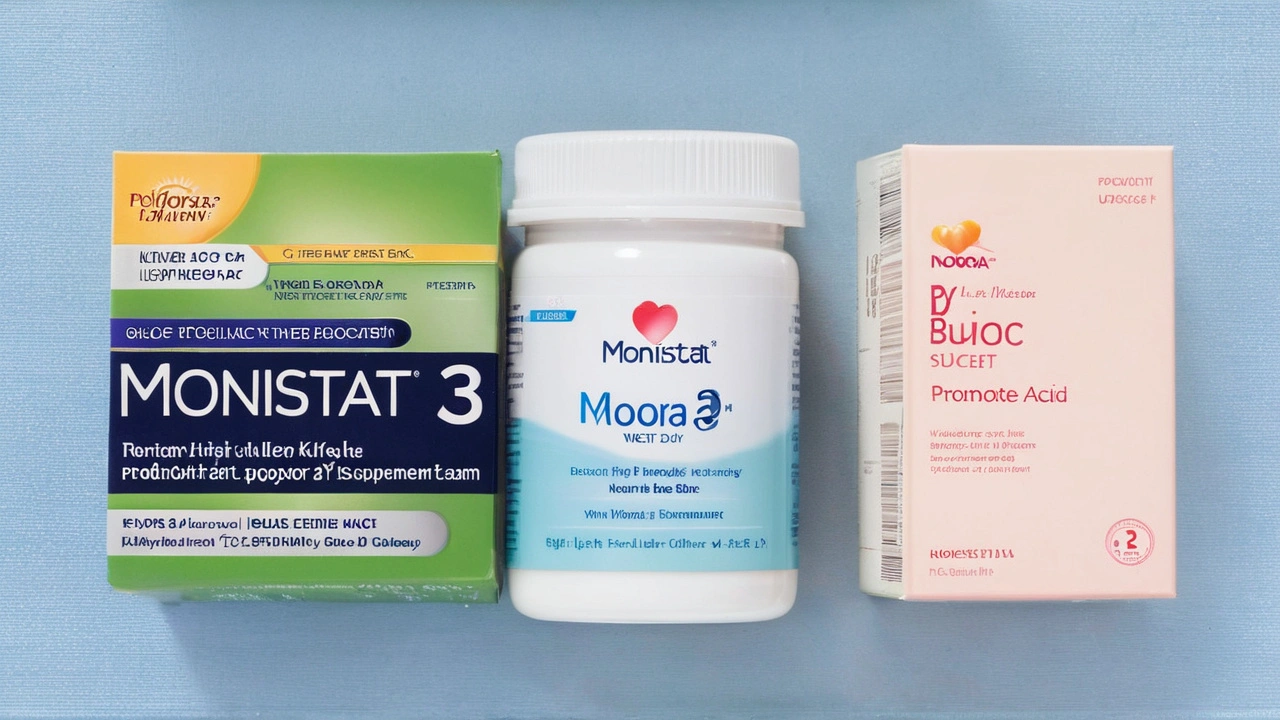Effective Yeast Infection Treatments – July 2024 Archive
If you searched our site this month, the main thing you’ll find is a deep‑dive into yeast infection solutions. We broke down what works, why it works, and when to choose an over‑the‑counter cream versus a prescription pill. The goal? Give you clear options so you can pick the right treatment without guessing.
Top Over‑the‑Counter Creams
The easiest place to start is with creams you can grab at any pharmacy. Monistat (miconazole) leads the pack because it’s fast, easy to apply, and comes in several strength levels. For mild cases, a single 1% cream applied for three days often clears symptoms. If you need a stronger dose, the 2% version extends treatment to seven days and can handle more stubborn infections.
Another popular option is Canesten (clotrimazole). It works similarly to Monistat but offers a gel form that some people find less messy. The standard regimen is a one‑week daily application, which aligns with most clinical guidelines.
Both products are safe for most adults, but they can cause mild irritation in sensitive skin. If you notice burning or rash, stop using the cream and try a different brand or move to a prescription option.
Prescription Pills and When to Use Them
The go‑to prescription drug is fluconazole (brand name Diflucan). A single 150 mg tablet often clears an infection within a day or two. Some doctors recommend a second dose after three days for added assurance, especially in recurring cases.
Fluconazole works systemically, meaning it attacks the fungus from inside your body rather than just on the surface. That’s why it can be more effective for severe infections or when creams haven’t helped. However, you’ll need a prescription, so a quick visit to your doctor or telehealth service is required.
Dosage matters: taking more than prescribed won’t speed up healing and could increase side effects like headache or nausea. Always follow the exact dose your provider gives you.
If you’re pregnant, diabetic, or have a weakened immune system, talk to a healthcare professional before starting any treatment. Some antifungals aren’t recommended in these situations, and a doctor can suggest safer alternatives.
Practical Prevention Tips
Even the best treatment won’t help if you keep exposing yourself to the same triggers. Wear breathable cotton underwear, avoid tight leggings for long periods, and change out of wet swimwear promptly. These habits reduce moisture buildup, which yeast loves.
Limit sugary foods and drinks; high sugar levels can feed Candida, the fungus behind most yeast infections. If you take antibiotics frequently, consider a probiotic with Lactobacillus strains to keep your vaginal flora balanced.
Finally, don’t self‑diagnose every itch or discharge as a yeast infection. Other conditions mimic these symptoms, and using the wrong medication can worsen things. When in doubt, schedule a quick appointment for a proper test.
That’s the full scoop from July 2024: clear options for creams, solid guidance on fluconazole pills, and everyday steps to keep yeast infections at bay. Use what fits your situation, and remember that professional advice is always the safest route.

Effective Yeast Infection Treatments: Top Creams, Pills, and Preventive Options Evaluated
Medical News Today provides a comprehensive overview of effective treatments for yeast infections, from over-the-counter creams to prescription pills. It highlights specific products for various needs, with a strong emphasis on scientific evidence and safety. Consulting a healthcare professional is advised for accurate diagnosis and treatment.
Read More